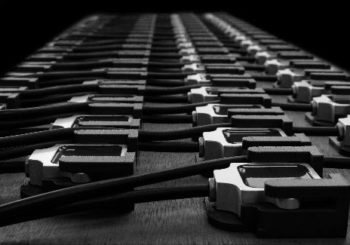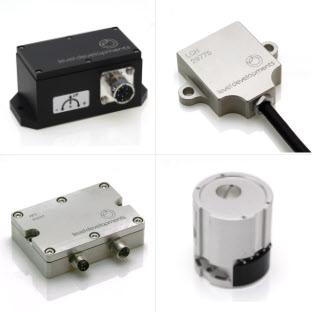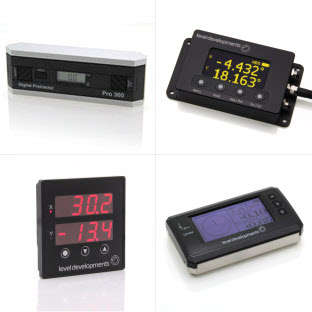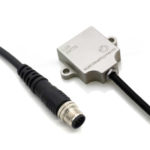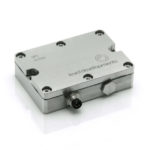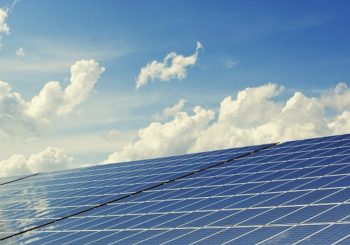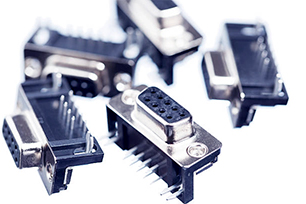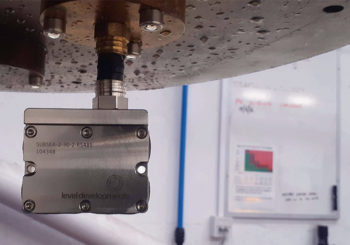Was sind Neigungsmesser?
An inclinometer (or clinometer), is an instrument used for measuring the angles of slope/tilt and elevation/depression of an object with respect to gravity. The resulting measurement is either given an angular measurement (degrees, minutes, seconds etc.) or as a percentage with reference to a level zero plane. Inclinometers use an accelerometer to measure these angles. They monitor the effect of gravity on a small mass suspended in an elastic support structure so that when the device tilts, this mass moves and causes a change of capacitance between the mass and the support. The tilt angle is calculated from the difference in measured capacitance.
To illustrate this, we can use a simplified model with two electrodes – one fixed, and one with a movable mass suspended by springs. The fixed electrode represents a perfectly level inclinometer in a horizontal position, where the base capacitance is measured. If the inclinometer is tilted (represented by the movable mass), the position relative to the horizontal position is changed, and the capacitance is again measured at this point. The change in capacitance when the electrode is tilted is measured and this is used to measure the incline value.
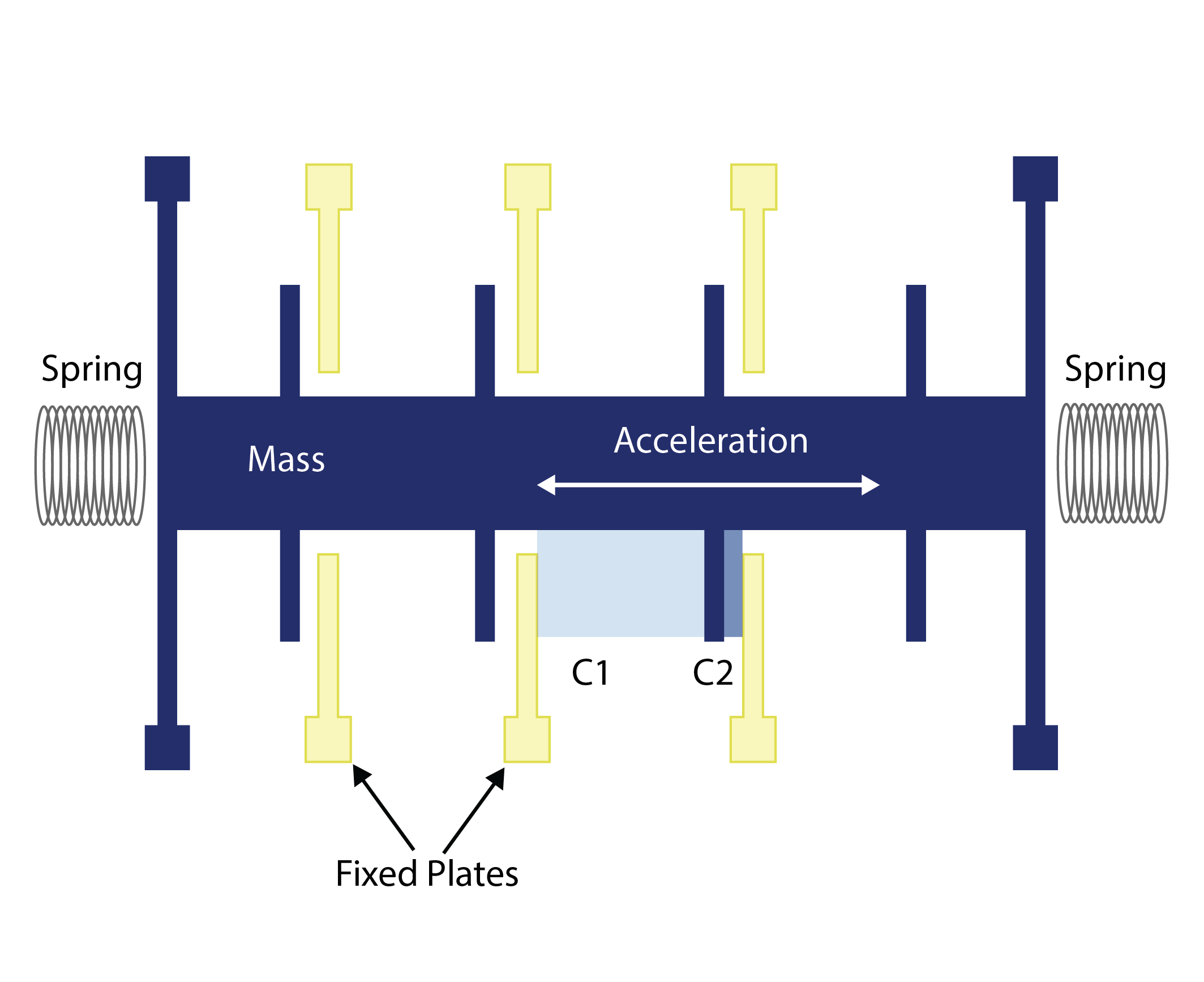
While this technology has been widely used commercially, such as in mobile phones, these applications tend to use low grade accelerometer cells which have poor accuracy for use with inclinometer sensor applications. Inclinometers designed and manufactured by Level Developments use high quality and precise MEMS technology to give the best resolution and accuracy of any measurement. Additionally, we also provide closed-loop servo systems which are of an even higher performance and may be better suited where higher accuracy is required. Example applications include:
- Position feedback for solar tracking systems
- Platform levelling and monitoring
- GPS compensation
- Agricultural and industrial vehicle tilt monitoring
For such a wide range of applications, the specifications of the inclinometer required may vary greatly. Some of the key specifications to consider when choosing an inclinometer include:
Number of Axes Measured
Inclinometers can come in both single-axis and dual-axis configurations. As their names suggest, single-axis measures angles in one axis, whilst dual-axis devices are able to measure both roll and pitch axes.
Measurement Range
The calibrated range which the device measures within, e.g. a device with a ±45° range will measure within a range of -45° through to +45°
Sensitivity
Sensitivity is the nominal amount that the voltage will change with when tilted throughout the range specified. The output is proportional to the Sine of the input, so the sensitivity changes throughout the measurement range.
Resolution
Resolution is the smallest measurable change in output.
Accuracy
Accuracy is the maximum error between the measured and displayed value at any point in the measurement range (usually up to a maximum value) when the device is at room temperature (20°C).
Temperature Range
Inclinometers have a temperature range in which they are certified to operate in, based on the components used to make them. This is usually appropriate for many general applications, however for some specific applications, the exact temperature range required may differ. Here, temperature compensation can be used which aims to expand the temperature range of operation, and reduce the effects fluctuating temperature on the inclinometer.
Output Type
The serial interface which allows you to connect and retrieve data from the device, as well as allowing the creation of a network of devices. This can also usually affect the cable length.
For more specialised applications, such as underwater requirements, additional specifications will need to be considered such as the pressure depth rating and material choices. As with all purchase decisions, the cost will also be a factor in deciding on the appropriate inclinometer. At Level Developments, we supply inclinometers that cover a wide range of applications such as Solar Tracking, Subsea and Industrial or Agricultural Warning Systems. We also provide digital products, and OEM solutions which allow the customisation of the above specifications to find the Inclinometer Sensor that is perfect for your application. Visit our Inclinometer Sensors page to configure the inclinometer appropriate for you, or contact us to tell us more about your OEM solution.
Browse some of our popular products from the links on the right or below:
- LCH-A-S-10-05 – Inclinometer sensor, single axis, ±10°, 0.5-4.5V output
- SOLAR-360-1-RS232 – Inclinometer Sensor, Single Axis ±180°, RS232 Output
- HPS-10-1-MOD – Precision inclinometer, single axis, ±10°, RS485 ModBus output
- DCL-05-TCP – Single axis closed loop servo inclinometer, ±5°, with TCP/IP ethernet interface
- SUBSEA-2-05-RS232 – Submersible Dual Axis Subsea Inclinometer, ±5°, RS232 interface
- LSRP-1 – LSR Inclinometer sensor, ±1°, output ±5V
- MAS-2-DR-15-1-CANJ – Dual axis inclinometer sensor, ±15°, CAN J1939 interface



